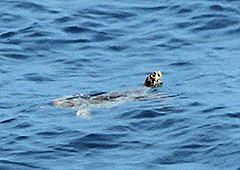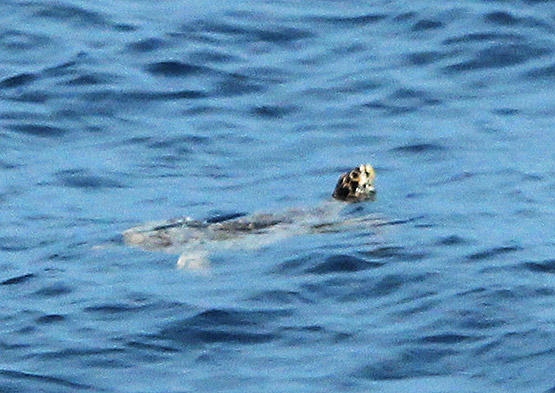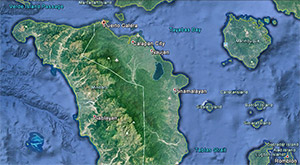Turtles Return To Puerto Galera
|
Images courtesy: John Smart
|
If you visited Puerto Galera in 1981, it would not have been uncommon to see turtles swimming along the shallow waters off the beaches and in the bays. The turtles would feed on the sponges and swathes of sea grass. Turtles would lay their eggs along the almost deserted beaches, especially along the peninsular beaches (from Coco Beach to Sabang Beach) and their young would stumble back into the water upon hatching, to commence their years of cruising the oceans.
Turtle numbers around Puerto Galera slowly dwindled to the point where most people – more interested in profiting from the burgeoning tourism industry – forgot about the graceful, slow moving visitors and hardly noticed their disappearance. Scuba diving was the in-thing and there is, truly, so much more to see in Puerto Galera than just turtles. The “the law is an ass, I own this beach” crowd bought and sold the beach resorts and dive shops that went right to the water’s edge, and many returning turtles were forced to find somewhere else to lay their clutches of eggs.
Fast forward to 2016 and, one night, one of those stumbling, circa 1981, baby turtles had finally found its way home. It climbed Small Lalaguna Beach, somehow scaled and crossed the concrete pedestrian walkway (that now runs the entire length of the beach), dug a sandy hole between the concrete pathways adjacent to the AB Wonderdive dive shop, and laid its eggs.
The area was fenced off to protect the nest of eggs from scavenging animals (including humans) and a volunteer guard was established for the two month (or so) wait for the hatching.
When the moment arrived, scores of baby turtles emerged from the sand, waddled comically across the concrete and down the beach, protected by two walls of excited humans, who formed a dog/cat/bird-free stumble-way for the turtle babies to get back to the sea and to begin their life in the ocean.
In 2017, during the Puerto Galera Yacht Club Easter Regatta, participants relaxing aboard after a day of racing were treated to the vision of two turtles swimming among the moored yachts. A week later another turtle was spotted in the same area. Could it be that the 1980s turtles had finally returned to Puerto Galera?
Conversations with scuba divers reveal that they are more frequently seeing hawksbill and green sea turtles in the Verde Island Passage, so just maybe the turtles have found that Puerto Galera, for all of its modern, concrete and human-commotion is indeed a place to call home. Let’s just hope that it does not take another 35 years for the batch of 2016 to return.
You can wait the turtle babies’ return or, if you are interested to see a relative abundance of turtles in the Philippines before you retire then you may be interested in two other (not so far away from Puerto Galera) islands.
The island of Banton, due South of Marinduque Island (about 50 miles due East from Puerto Galera) is a superb turtle spotting location. Mainit Bay, on the southwest corner of Banton Island features hot springs that bubble up from the floor of the bay. When I was last there, in charge of a charter yacht (March 2016), hawksbill turtles just kept on surfacing around our yacht. The attraction appeared to be the warmer water from the hot springs below – the marine sanctuary, to the North of Mainit Bay, had no turtles. According to residents of Banton Island there is a beach along the North shore of the island that is a turtle nesting beach. There is only one scheduled ferry a week to Banton Island from Romblon, so it is not so easily accessible for the average tourist. Best way to get there: charter a yacht.
A little more accessible is the island of Sibale (also known as Maestre de Campo or Conception), due East from Pinamalayan (Oriental Mindoro). Sibale has turtles visiting almost year-round. You can frequently see them from the shore, while snorkeling or when taking the once-a-day ferry from/to Pinamalayan.
Sibale has a designated turtle sanctuary beach, due South of the town. On this beach the turtles come ashore and lay there eggs in the sand, between the mangroves and other flora. Also, on the same beach, a specie of tabon bird lays its eggs. The very shy tabon bird (about the size and shape of a guinea fowl) will dig a hole in the sand, up to a metre in depth, lay a couple of eggs, roughly cover the hole and then scurry back into the vegetation above the beach. How the hatching tabon bird chicks know that they must push their way up through a metre of sand to reach daylight is a mystery to me, but push they must because there are many tabon birds on the island and the tabon bird has probably been nesting here since Sibale ceased to be an active volcano – before man.
There are actually too many turtle areas and turtle nesting beaches around the Philippines to list in one article. If there are turtle beaches that you have visited in the Philippines then please email to GetWet-Asia (philippines@getwet-asia.com) Philippines so that we can share the information with the World.



 turtle swimming towards nesting beach
turtle swimming towards nesting beach